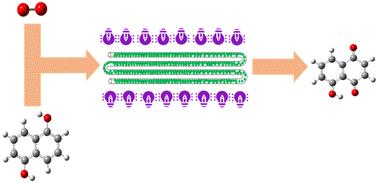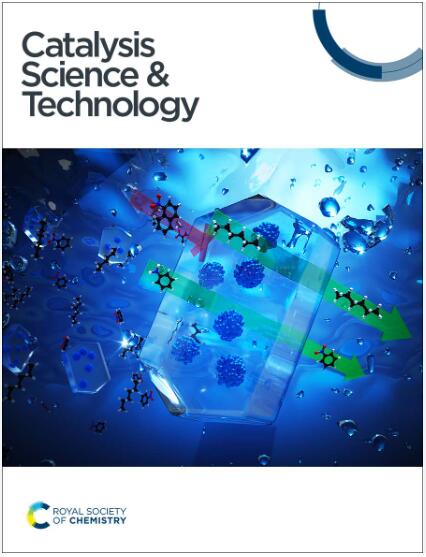Scalable and green juglone synthesis via heterogeneous photocatalysis in a photomicroreactor†
IF 4.4
3区 化学
Q2 CHEMISTRY, PHYSICAL
引用次数: 0
Abstract
The selection of green and scalable heterogeneous photocatalysis is always a great dilemma for the chemistry and chemical engineering communities. In this report, we resolved this vital conundrum by synergistically examining the scalability and green potential of heterogeneous photocatalysis for juglone synthesis. We scaled up juglone productivity and the space–time yield to 15 g per day and 43.87 g L−1 h−1, respectively, via heterogeneous photocatalysis with a high-power LED as a light source and Amb–m-TcPP as a photocatalyst, which was fabricated by incorporating meso-tetracarboxyphenylporphyrine (m-TcPP) over the polystyrene ion-exchange resin Amberlyst-15. Amb–m-TcPP showed excellent recyclability in multiple cycles and exhibited high photostability for 12 h continuous operation without m-TcPP leaching with a turnover frequency of 409.7 h−1. The apparent rate constants were higher than those in previously employed heterogeneous photocatalysis, and intrinsic rate constants of intermediate steps were evaluated using transition state theory with quantum mechanical models using DFT simulations, which was useful for gaining mechanistic insights into this photooxidation process. Finally, heterogeneous DHN photooxidation was confirmed to be well aligned with green chemistry principles, and E factors were found to be under an acceptable range. Thus, this heterogeneous DHN photooxidation can be regarded as a green and sustainable synthesis route for multigram juglone production.

在光微反应器中通过异相光催化技术合成可扩展的绿色朱格拉酮†。
选择绿色、可扩展的异相光催化技术一直是化学和化学工程界的一大难题。在本报告中,我们通过协同研究异相光催化在朱格罗酮合成中的可扩展性和绿色潜力,解决了这一重要难题。我们采用大功率 LED 作为光源,Amb-m-TcPP 作为光催化剂,通过在聚苯乙烯离子交换树脂 Amberlyst-15 上加入中-四羧基苯基卟啉(m-TcPP),将异相光催化法合成的丁酮产量和时空产率分别提高到每天 15 克和每小时 43.87 克 L-1。Amb-m-TcPP 在多次循环中表现出优异的可回收性,并且在连续运行 12 小时后表现出较高的光稳定性,m-TcPP 没有浸出,周转频率为 409.7 h-1。表观速率常数高于之前采用的异相光催化技术,并利用过渡态理论和量子力学模型进行了 DFT 模拟,评估了中间步骤的内在速率常数,这有助于深入了解该光氧化过程的机理。最后,异相 DHN 光氧化反应被证实非常符合绿色化学原理,E 系数也在可接受的范围内。因此,这种异相 DHN 光氧化反应可被视为生产多克朱鹭酮的一种绿色和可持续的合成路线。
本文章由计算机程序翻译,如有差异,请以英文原文为准。
求助全文
约1分钟内获得全文
求助全文
来源期刊

Catalysis Science & Technology
CHEMISTRY, PHYSICAL-
CiteScore
8.70
自引率
6.00%
发文量
587
审稿时长
1.5 months
期刊介绍:
A multidisciplinary journal focusing on cutting edge research across all fundamental science and technological aspects of catalysis.
Editor-in-chief: Bert Weckhuysen
Impact factor: 5.0
Time to first decision (peer reviewed only): 31 days
 求助内容:
求助内容: 应助结果提醒方式:
应助结果提醒方式:


